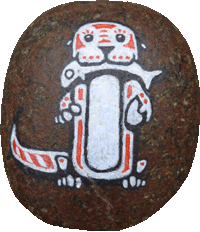The main reason to visit Nepal is for trekking in the Himalayas – even then, you need to be the right kind of person to enjoy it. Nepal does have friendly people, it is cheap, there are some great cultural sights, and compared to most of Asia it is hassle-free. But the squalor and chaos of Kathmandu and the pain of travel outside the capital means these positives just don’t stack up against the negatives – not for us anyway (with a few exceptions, noted in other blogs and our Recommended section!).
Accommodation
Maintenance?
The most frustrating thing about accommodation (and everything else) in Nepal is the absence of the word “maintenance” from their vocabulary. The general idea, as explained to us by a local, is that you spend money to build something – a hotel or whatever – and after that it should provide you with money, not cause you any further cost. So we saw and stayed in places that would have looked quite lovely with fine facilities when they were new built, but now most of the plumbing is broken or leaking and everything looks worn, chipped, tatty, faded and run-down. Very sad.
Food
Unless you are hugely daring or know a local, you’ll eat mainly in tourist restaurants throughout Nepal. A meal for two with non-alcoholic drinks will be between £12 and £20, which is pretty good. At our favourite local Nepali restaurant (shown us by a local!) we can have a meal for two with drinks for £3.50, better still. Nepali food is along the lines of Indian, but with less rich sauces and generally a simpler selection. The national dish, dal bhat, is essentially a very average quality thali.
Dal bhat
The national dish is Dal bhat – a plate of rice with some veg curry, some achar pickle, a half-papadom and a bowl of lentil soup (dal). The variation in quality and specific recipe of this simple formula is quite amazing – I’ve eaten more than 30, from dull to delicious. You pour the dal over the rice and then start eating, and just ask for extra helpings of any of it that you run out of. Oh yes, and you eat with your right hand, remembering to wash your hands before starting. Needless to say, in tourist restaurants they’ll give you a fork – but it’s more fun with fingers!
Drink
I like Nepali tea. Done properly, it is strong tea made with boiled milk and sweetened, usually with some spices (e.g. cardamom and ginger). Frustratingly, the more touristy and up-market a place is, the more likely it is to deliver crap tea made in a western style and probably no spice. The other drink I like in Nepal is lassi – curd yoghurt blended with fruit. Beer and wine are pretty much the same price as in a cheap English pub, so we stayed mostly tee-total here. There’s no notable local booze except raksi, which is strong rice liquor and useful for little except getting drunk.
Transport
We’ve used every common mode of transport in Nepal except flying – motorbike, taxi, local bus, express bus, tourist bus, hired car, 4×4. The buses will get you pretty much anywhere and cheaply, but could only be considered bearable if you get on at the start of the route – when there are seats to choose. Taxis are cheap in Kathmandu, but you must haggle. Hired cars are most comfortable, but most expensive – duh.
The roads in Nepal are absolute crap, and you’d be insane (and soon dead) if you tried to drive yourself. In part, it’s because so much of the country is vertical and roads have to snake their way along the most perilous valleys and mountainsides. But they aren’t maintained either, so the tarmac roads have patches of vicious potholes or even completely unpaved sections (generally where a landslide has covered the road, and they’ve just shifted the worst rubble and flattened the rest). The unpaved roads are spine-jolting but can hardly be called rollercoasters because the average speed is of necessity about 10mph. Example: Dhunche (where Langtang treks start) is 120km from Kathmandu but the journey took 9 shuddering hours. You can do the maths.
Oh yes, the vehicles are crap as well. In seven weeks we had three breakdowns of various kinds (once in a bus). The best was when the terminal block snapped off the car’s battery and the trailing end melted the battery casing, spilling acid everywhere. Don’t worry, the driver somehow re-attached the cable to the stump of the terminal and put duct-tape over the hole, and we pushed the car back down the mountainside to jump-start it.
Weather
Scams and hassle
Tip on taxis: ask your guest house or hotel how much the taxi cost should be for a given destination, and then haggle the taxi driver down to that. If they are resistant, move on to the next taxi. The meter is never working.
Crime and security
We didn’t see or experience any criminal behaviour in Nepal, and it has a reputation for being fairly safe. Be careful everywhere, though – we always are.
Hiking and wildlife watching
Himalayan trekking is a BIG subject – which is why it has a blog post all of its own. Suffice to say, the days of trekking in beautiful surroundings were pretty great, but the nights of freezing cold in grim little lodges were pretty awful. If you’ve ever stayed at a campsite and think that’s “roughing it”, this is worse.
Regional variations
Kathmandu and Pokhara are the only places in Nepal where you’ll find proper western comforts, but you won’t find much of the charming culture and character of the nation. In the Terai the traditional life of the Tharu people is much better seen at Bardia than Chitwan – although the Terai itself doesn’t have the scenic beauty of the hill and mountain regions. The central belt of Nepal, the mid-hills as they’re called, is full of amazingly huge, steep-sided river valleys clad in rainforest or rice terraces. The trekking regions range from
Conclusion
Nepal is fascinating, and will leave us with some entertaining memories and stories. But it’s a tough place to visit and not on our list of places to return to. It’s a very poor country, and currently badly run, and this is reflected in everything that as a visitor you’d like to work well: roads, sanitation, accommodation, conservation.
2011 is apparently “Nepal Tourism Year” but whatever they have planned, the best service they can do their tourism industry is fix all those things that the people of Nepal themselves would also benefit from.
We most liked…
- Wandering the streets of Bhaktapur at festival time
- Astonishing mountain views in the high Langtang valley
- Walking through the rhododendron forests around Poon Hill
- Boating on placid Pokhara lake on a warm evening
- Seeing smooth-coated otters in Bardia NP!
We least liked…
- Freezing cold nights in comfortless trekking lodges
- Bone-shattering express bus ride across the Terai
- Plucking yucky leeches off trousers at Bardia
- Piles of rubbish all over the place, in every village, town and city
- Terrible pollution, air and noise, in Kathmandu
Related Images:














































Based on what you’ve said, I have to say I’m glad we didn’t come to join you on this part of your trip! The thing that would really get me is the lack of a hot shower everyday. You do have some wonderful photos though. I’m sure Thailand will be a much better experience. Maybe now isn’t the time for us to explain in detail about everything we ate at the waterside inn & the hinds head for our anniversary?? 🙂 x
We’d love to hear all the details about your anniversary meal! Of course, we’re in Thailand now and all food is exactly as tasty and spicy as we’d hoped – so we won’t be envious at all.
You’re darn right about the showers. It’s grim to get back from a day of sight-seeing in a dusty city, desperate to get cleaned up… only to find that it’s going to be freezing cold or not at all. : b